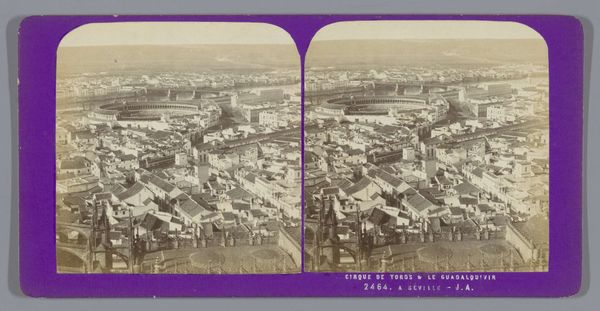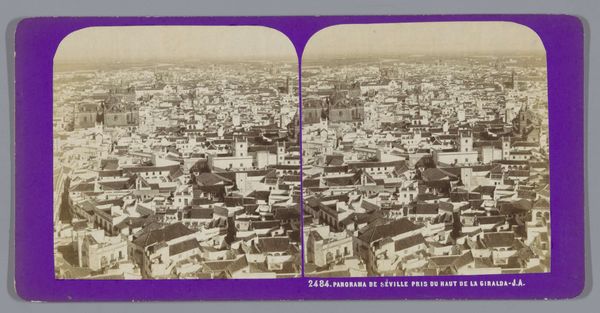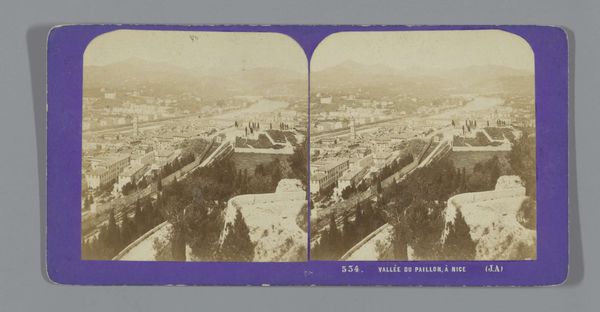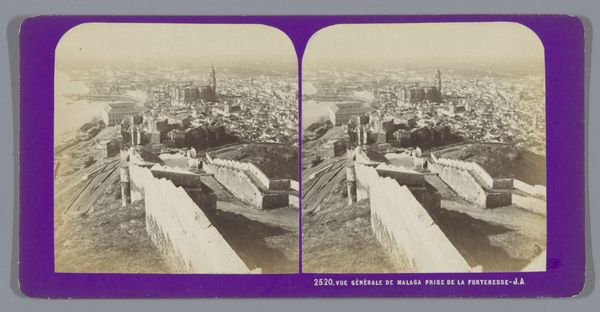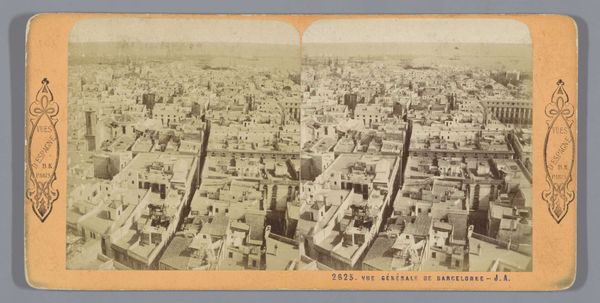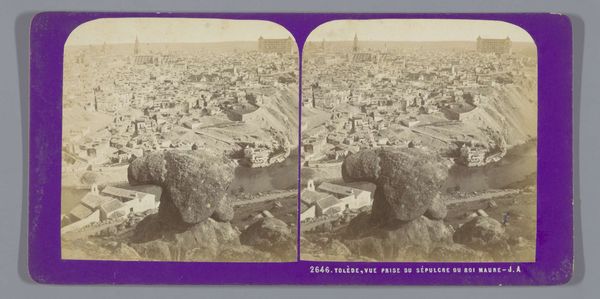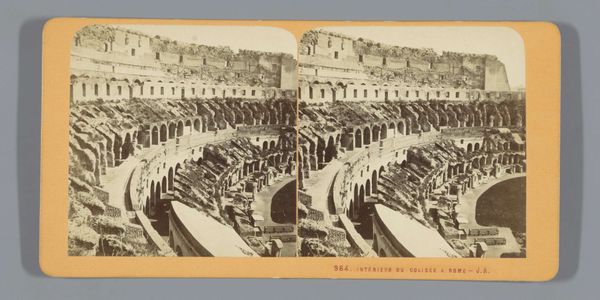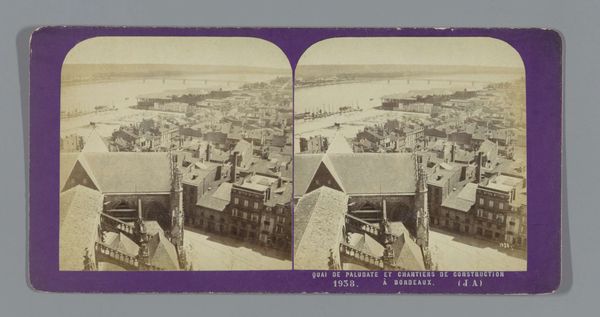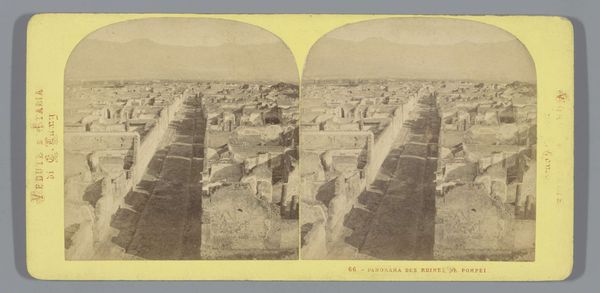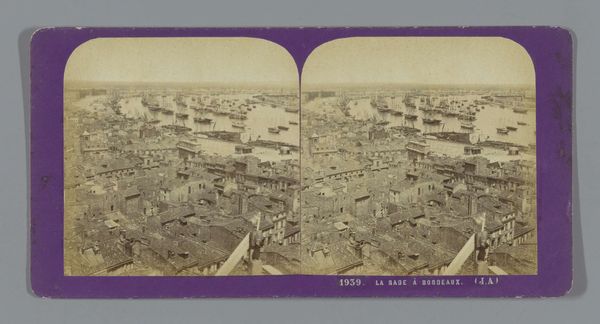
photography, gelatin-silver-print
#
photography
#
orientalism
#
gelatin-silver-print
#
cityscape
Dimensions: height 85 mm, width 170 mm
Copyright: Rijks Museum: Open Domain
Curator: I find this photograph incredibly compelling, offering us a panoramic view of Córdoba. It's a gelatin-silver print, created between 1862 and 1876 by Jean Andrieu. Editor: Immediately, I'm struck by how overwhelmingly dense the architecture is. It feels almost organic, like a living, breathing thing spreading out towards the river. The monochrome tones create this fascinating textured effect across the cityscape. Curator: Precisely. The composition is rather fascinating. Consider Andrieu's placement high atop the Mezquita, framing the cityscape. These panoramic images allowed 19th-century viewers to consume the exoticism of foreign locales, in keeping with the era’s burgeoning tourism. It fits squarely into a fascination with Orientalism. Editor: That raises critical questions for me. To what extent is Andrieu complicit in exoticizing a place and its people? We need to recognize how the act of observation, especially by those in positions of power, can reinforce existing biases. Photography from this era served as a potent tool in solidifying the ‘otherness’ of non-Western cultures. Curator: Of course, and we can also consider the formal properties that are products of institutional context: The use of the gelatin-silver printing process and its impact on photography’s accessibility as it transitions from elite hobby to the democratized medium it would eventually become. Editor: Looking closer, there’s also something poignant about capturing Córdoba at this specific historical juncture. The layering of architectural styles speaks volumes about cultural exchange, imperialism, and resilience. How has colonialism affected the population represented below? I see entire legacies of colonization imbued into a photograph such as this. Curator: Indeed, and images like this contributed to a broader visual culture that promoted certain political ideologies. Consider this photography in relation to broader questions regarding visibility, representation, and agency within imperialistic narratives. I wonder if this type of perspective and its association to the power of observation holds new importance in contemporary photography. Editor: It forces a necessary conversation. Recognizing that images are rarely neutral, instead we should be pushing toward inclusive narratives. Well, it appears we've offered plenty of new perspectives on this view. Curator: I’ll be sure to bring them up the next time it's put on display.
Comments
No comments
Be the first to comment and join the conversation on the ultimate creative platform.

